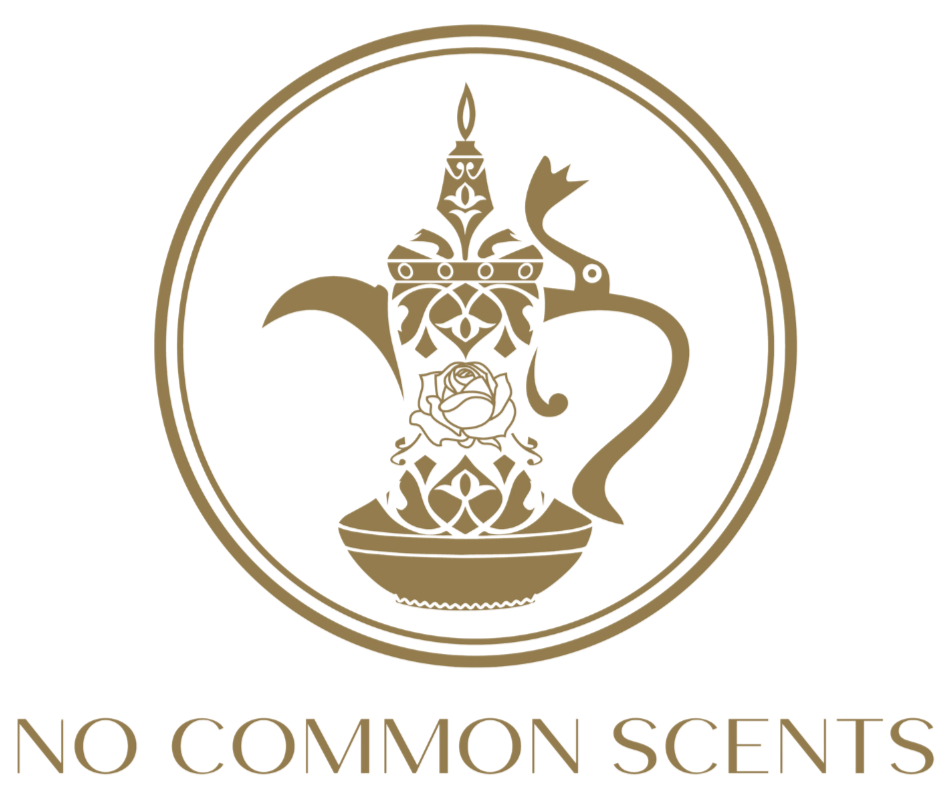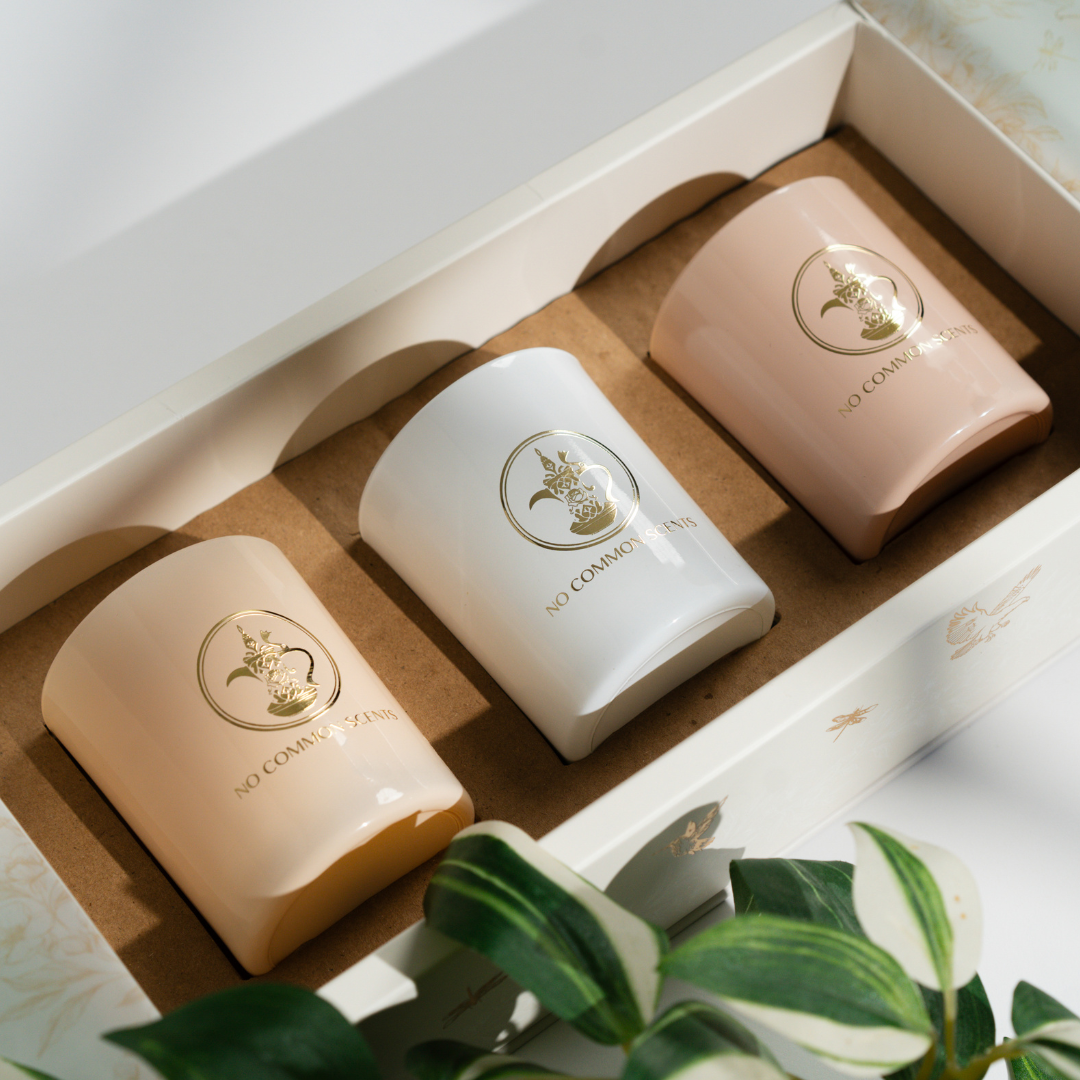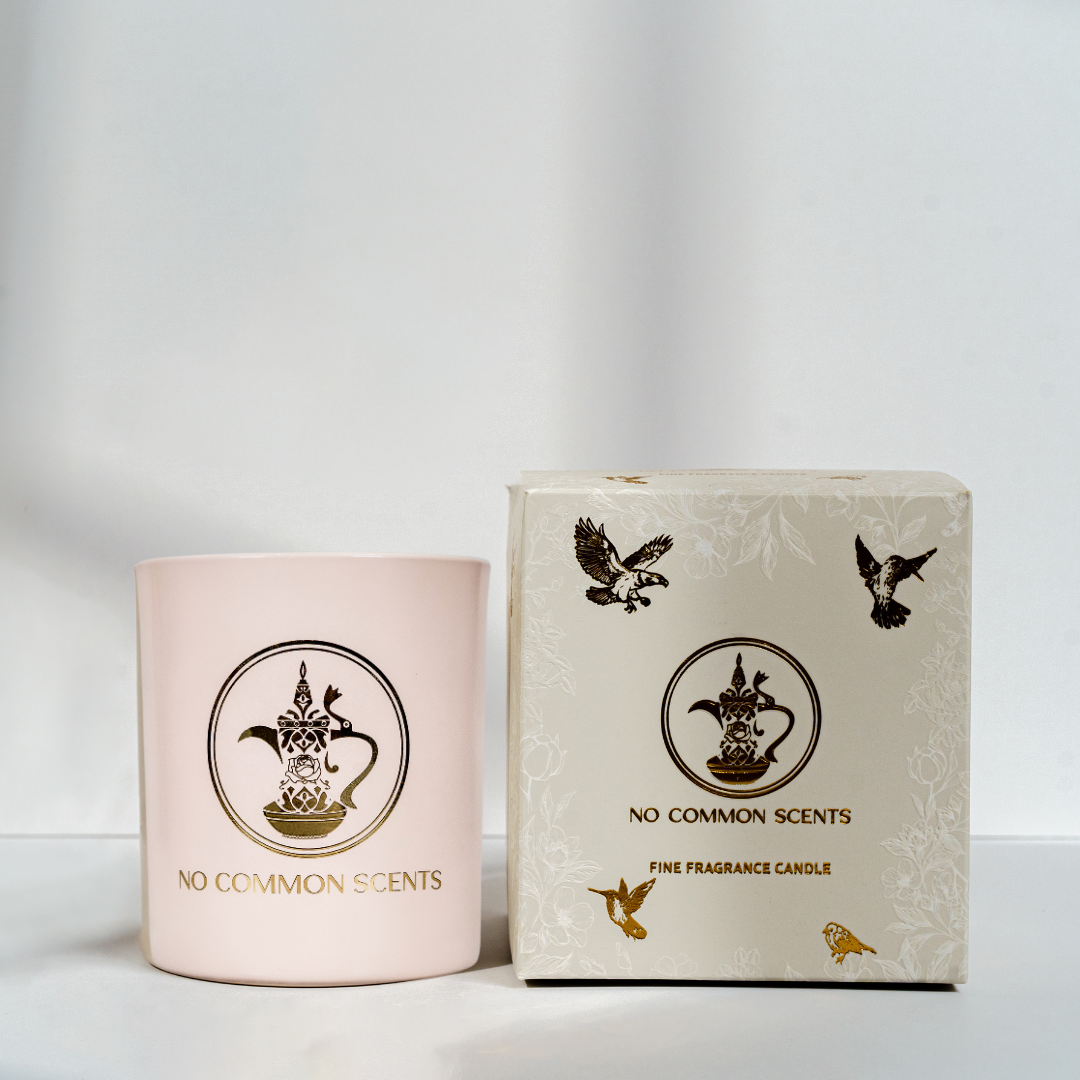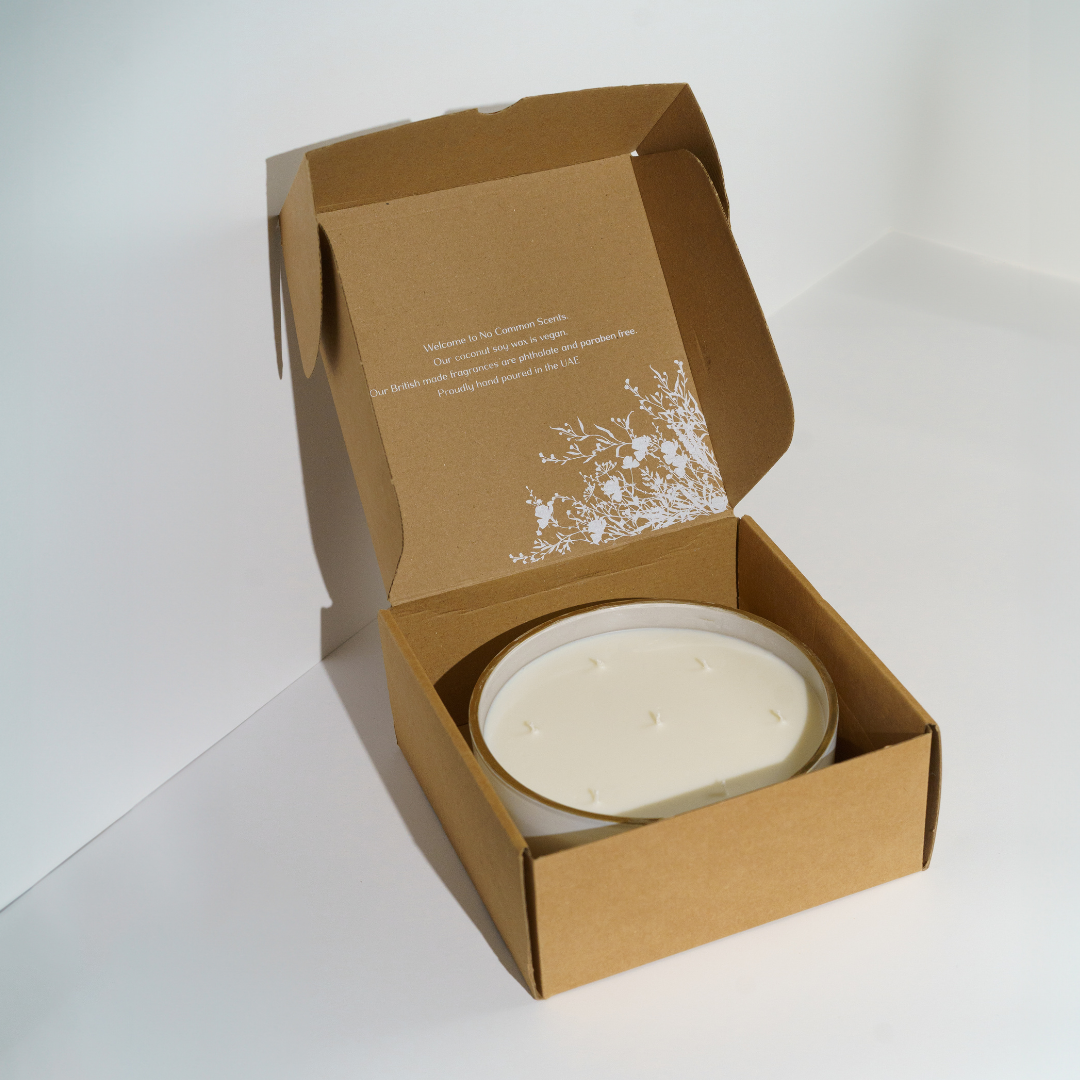THE BIG CLEAN BURN LIE
Ah, where to start with a lie?
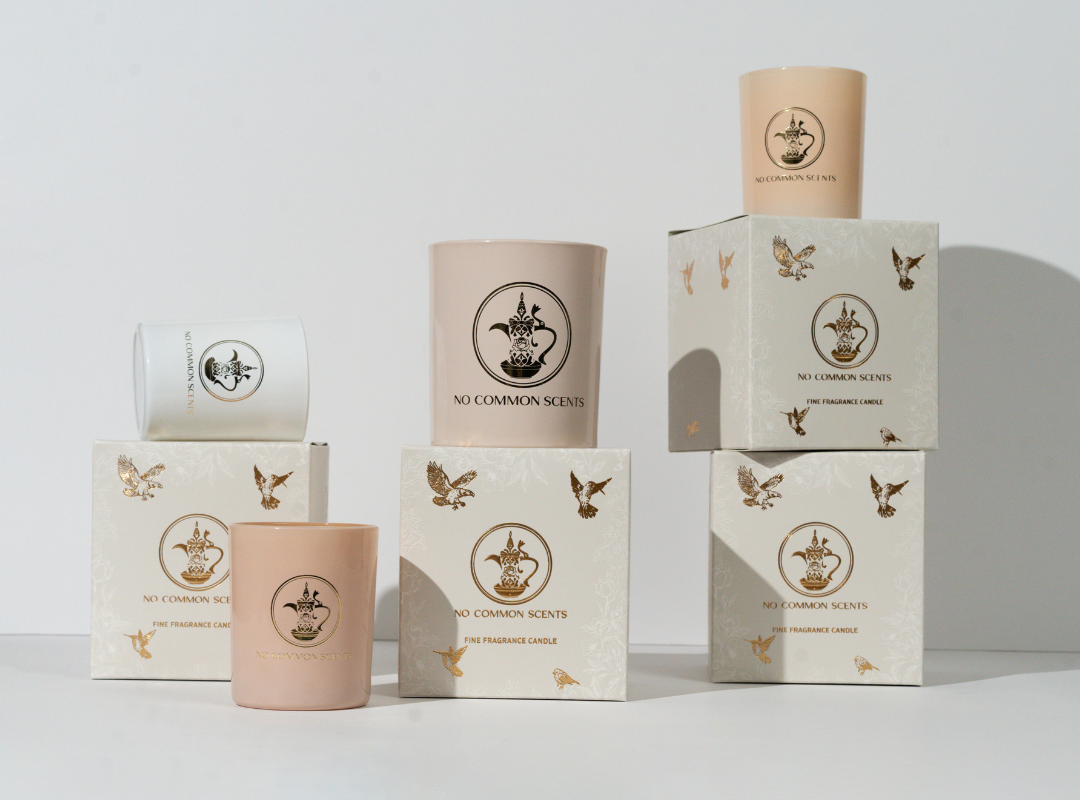
It is difficult, because these days, no one wants to admit they were wrong but no one is willing to do the research, not when "knowledge" is offered up on TikTok in bite size chunks you can repeat online. So we appreciate you being here.
So this is our take on it:
The “non toxic”, “clean burn” ethos is a false narrative, cooked up by the marketing departments in the wellness industry to lure you into a sense of cleaner, more expensive living.
It has created division and snobbery, panic and worry when there needn't be.
So we will keep it simple and will endeavour to keep this page up to date with news and rumours as they happen.
We encourage you to please research this for yourself, like we did and do what is best for you, your home and your pocket.
Myth Number 1: Paraffin Wax is toxic
To this day, not one single peer reviewed piece of research has ever confirmed paraffin to be dangerous. By peer reviewed, we mean the experts in their chosen field, not someone making memes and sharing them online.
The world's largest chandling association, the NCA, has some excellent answers to frequently asked questions we see popping up on social media:
We understand the confusion; we all want to believe what we are eating, drinking, spraying, inhaling is safe and rightly so. So let’s get into the facts:
The source of paraffin is petroleum/ crude oil, it's a non renewable source which we know harms the planet.
But it remains a naturally sourced by-product that has been used, instead of wasted. Society isn't ready to turn its back on crude oil just yet, it is your choice whether you think the by-product should go to waste, much like meat eaters may argue wearing leather shoes and belts are not a problem as it is going to waste regardless.
Paraffin wax is less expensive to refine and requires less fragrance oil per gram than other waxes (so cheaper). Paraffin can also take a higher fragrance load (so cheaper and stronger). You won’t die, but if you’re sensitive, this could have an allergic reaction.
Anyone can be allergic to and have a reaction to anything: dust, pollen, animals, shellfish, cheap wine.
Strong smelling candles which induce a headache in some is not the sign of paraffin being dangerous, it means the fragrance load is too high for the person; nearly all major brands have their own wax blends, some waxes allow for a higher fragrance load (some as high as 20%, we only need 8%).
PS- we use coconut soy because we love working with it. That's it.
PPS- yes we saw the very dramatic TikTok video of someone reading ingredients off of a well known candle and declaring it is toxic (keep reading, we'll get to that later).
Myth Number 2: Essential Oils in Candles
We really, reaaaaaaaally dislike this one. It has created a superiority complex and snobbery which doesn't belong in candles and makes us feel a bit sad really.
You’re going to need to grab a cup of tea for this one. Are you ready?
NATURE. CAN. BE. TOXIC. NATURAL DOES NOT EVER EQUATE TO SAFE.
There. We said. The scientists know it. The manufacturers know it. The aromatherapists know it. The Queen of No Nonsense Beauty Products Caroline Hirons knows it.
On the global list of ALLERGIES- 90% are from Mother Nature herself.
Just because it is natural does not mean it is safe to use in anything you wish. You wouldn’t sprinkle arsenic on your breakfast would you? Would you eat mercury lollipops if they were a trend? (Please say no).
Just because it’s classed as natural, does not mean you should be throwing it in a candle.
Let's start with who.
Is your candle maker a qualified aromatherapist? Ask them, you're buying something you're inhaling, you have a right to know.
If not? Then why are they working with oils which are volatile by their very nature? It is a skill which needs to be studied and respected.
Yeah but I still feel natural is better, I don’t like synthetics and chemicals.
OK- ‘synthetic’ rose or nature's rose?
Guess which one has the allergen removed? Yep, the synthetic. Without synthetics, we wouldn’t have classics such as Chanel No. 5.
Synthetics are not the enemy, fake news is.
‘I don’t like chemicals’
Water is a chemical. It’s a molecule containing one oxygen and two hydrogen atoms.
Created and used correctly, laboratory fragrance is a perfectly safe alternative.
‘Natural’ does not ever equate to safe.
This has got to stop. It's dangerous. Seriously.
Please, under no circumstances burn essential oils if you do not know what they are- they are not only harmful in the incorrect dosage and blend, they can induce horrific seizures in your pets, potentially killing them, here is a not exhaustive list:
https://www.foundanimals.org/essential-oils-toxic-pets/
Our three rescues, who were abused, have grown up around No Common Scents. We would never risk our family, of two cats and a dog, for a quick buck.
High quality essential oils are not cheap, so if you've bought something for a bargain, you need to ask yourself why.
Essential oils can have great relaxing and calming properties, when used correctly. For example, peppermint is great for soothing the stomach, just make sure it isn't pennyroyal, unless you want to poison your liver (more facts here including examples of infants being hospitalised by the misuse of essential oils https://www.poison.org/articles/essential-oils)
We refer to the experts at The Tisserand Institute, teeming with knowledge far deeper than ours, from industry titans such as Robert Tisserand and Dr. E. Joy Bowles; PhD, BSc Hons whose work on essential oils has set the standards globally for decades.
The largest market for the manufacturer of essential oils is the USA and essential oils do NOT fall under FDA jurisdiction. Therefore they are not regulated like cosmetic ingredients, medicine or food.
There IS a governing baseline for the synthetic fragrance industry, from perfume to chandling: https://ifrafragrance.org/safe-use/introduction
Pesticides ARE used on crops that yield essential oils.
People can be allergic to essential oils because they release volatile organic compounds (VOC’s): https://www.lung.org/blog/essential-oils-harmful-or-helpful#:~:text=Essential%20oils%20are%20not%20regulated,volatile%20organic%20compounds%20(VOCs).
If you care about the environment, we’d like to share some facts with you about the true cost of harvesting essential oils.
Aromatherapist Mindy Green, founder of Green Scentsations and author of books like Aromatherapy: A Complete Guide to the Healing Art notes:
"It often takes hundreds of pounds of plant material to make 1 pound of essential oil.”
We couldn't believe it, so we dug deeper.
50 POUNDS of eucalyptus to create 1 pound of eucalyptus oil
250 pounds of lavender for 1 pound of lavender oil
The worst?
10,000 pounds of roses for 1 pound of rose oil.
For No Common Scents, this is not caring for the Earth, not when there are safe, laboratory grown alternatives.
The brilliant IFPA, the International Federation of Professional Aromatherapists, is an excellent resource, providing extensive details about sustainability, over-harvesting and social, economic and environmental impact of cultivating plants for essential oil extraction. ifparoma.org/what-we-do/
We understand the use in beauty products and topically applied for some medicinal issues, but solely using essential oils in candles is ironically, not essential.
We do use small quantities of essential oils in many of our fragrances, combined with our safely produced laboratory oils.
Now you know how much plant material it takes to create a pound of essential oil, what do we know about who is picking and harvesting this heavy load?
Are they being paid fairly? Are they being provided with the protective equipment to safely do their job? Did you know workers risk third degree burns harvesting and cultivating candelilla wax, another natural wax that despite being from nature requires harsh chemical washing to process?
In 2024, the BBC released its findings into the human rights abuses plaguing the industry, this time specifically investigating the abuse when it came to the harvesting of jasmine for luxury perfumes.
Heba, an independent jasmine picker in Egypt’s Gharbia region, wakes her four children (aged 5-15) at 3 am to pick flowers before the sun damages them. Her family collectively made $1.50 the day they were interviewed, a meagre sum even tighter due to Egypt’s soaring inflation. Heba was shocked to learn the international market price for perfume, with Lancôme Idôle L’Intense retailing for $118 and Aerin Beauty Ikat Jasmine for $150.
The investigation has been released here and makes for a sombre watch indeed: https://www.youtube.com/watch?v=3295wEpmajo
Essential oils don’t always react well to heat.
High quality rose essential oil is expensive and not all essential oils can survive the heat of a candle burning. While the candle may have an okay cold throw (how it smells when it’s not lit), the oil can burn right up and you won’t even smell all that expensive essential oil. High concentrations of essential oil can also combust.
We encourage you to research for yourself but this is our stance.
We proudly combine the ingenuity of human made fragrances and where suitable, a little of nature’s ingredients.
Myth Number 3: SOY IS CLEANER AND SAFER- FALSE
Soy DOES NOT grow in luscious, pretty creamy flakes that you see on the "behind the scenes" TikTok's.
Soy DOES require harvesting- which means petroleum fuelled crop machinery.
Soy DOES heavily contribute to deforestation globally- 280 million acres were used to produce soy in 2013-2014 (an area roughly the size of France, Germany, and the United Kingdom combined)
Soy HAS been genetically modified- 90% of USA crops are genetically modified and grown using pesticides. Monsanto/Bayer makes over 90% of soy bean seeds sold in the global market today (look those guys up)
Soy DOES require chemical washing- it undergoes chemical processing to create the final product.
Soy DOES create high carbon emissions- the world's supply of soy mostly comes from the USA, so for it to be shipped everywhere for processing- not ideal. You are not buying soy locally.
Soy CAN mean land is over farmed, to keep up with demand.
Soy DOES NOT "throw" better than paraffin; you can create strong smelling soy candles, it requires skill, knowledge and good quality fragrance oils but it does not equate to soy being superior. Paraffin throws better simply because of the science- soy is more dense so requires more heat to burn up which can take longer for soy to release the fragrance. As the wax melts, the flame’s heat vaporizes the liquid wax which diffuses the fragrance oil into the air. So, if paraffin burns up easier, it will generally release the fragrance easier making the scent throw stronger or more prevalent.
Both soy and paraffin wax can produce certain emissions which can compromise the air quality in your home. These may include alkenes, toluene which have all been reported to have harmful effects on humans. However, the amount of these chemicals that are being released into the air is so minimal that most people are not affected by them. That is just what candle wax is, one is a by product, one is harvested, both require further alteration for it to be usable in candles.
There is nothing "more clean" about soy. We are shocked to read some brands claiming it as ‘healthy’. That’s simply not true. Just another gimmick.
The buck stops with us- like everything ‘bad’ for us, we need to take ownership of what we choose to consume. Whether it is Botox, fats, carbs or alcohol- used responsibly, candles are still safe to use.
Myth Number 4 - SOOT IS TOXIC
Soot is the natural by-product of incomplete combustion. That’s it.
You are setting fire to something and it is burning. It is NOT a sign of toxic deadly emissions poisoning the air. You could make a candle with absolutely no fragrance, when it burns, it would still emit soot!
If your candle is emitting black soot everywhere? Chances are it has been made poorly (over wicked). If it is in a draughty place (like near the AC unit or a fan?), the flame will be flickering causing more soot.
If you remain unconvinced that’s ok, here are some excellent sources to further your research and explain in more detail how a candle behaves (it’s like being back at school, without detention!)
https://candles.org/candle-science/
If you’re still unconvinced, that’s still ok. But we recommend you never use a toaster again, the micro particles of soot released are about the same size.
We do agree, however, that soot is messy and unsightly. And yes if you copy the TikTok’s and burn a candle right next to a white wall? You won’t have a white wall, you'll have a sooty one.
So we urge you to treat your wicks like toxic people, cut 'em short!
After each burn, once cooled, trim your wick SHORT and shake it into the trash to prevent mushrooming and causing that awful volcanic eruption of black soot going everywhere.
Myth Number 5
We will keep this short and sweet.
LEAD WICKS WERE BANNED IN 2003 FROM THE USA, THE LARGEST CONSUMER OF CANDLES. 99% OF WICKS ARE COTTON.
With a small range using zinc inside if necessary (not dangerous and we don't use them).
It feels like peak green-washing, brands just copy pasting from other brands because they think it shows their green credentials.
We aren't going to tell you our wicks are lead free, because it implies that this makes us 'greener' when in fact, it is just the default.
If you can find a lead wick on sale now? Put it in a museum.
Myth Number 6
Anything which contributes directly to destruction of wild animal's natural habitat and is awash with human right's abuses has no place in our candles.
We will not engage in 'whataboutery'- it is harmful to excuse one wrong by trying to compare it to another. We wish our smart phones were not linked to the widespread abuses in the Congo. We wish the tech giants were doing more. But that is another fight- and this particular fight is about palm oil.
During our research, we have discovered countless reputable sources including the global leaders Greenpeace, who elaborate more on the misuse of the "Responsible Sustainable" badge we see on palm products.
https://www.greenpeace.org.uk/news/5-problems-with-sustainable-palm-oil/
One Green Planet goes so far to call eco friendly palm oil an outright lie:
https://www.onegreenplanet.org/environment/eco-friendly-palm-oil-is-a-lie/
The Palm Oil Detectives are dedicated to uncovering truths which are pushed to us as fact:
https://palmoildetectives.com/2021/10/11/greenwashing-tactic-7-lying/#Reality-human-rights
And finally, we LOVE a brand which holds itself accountable.
Read here from the largest candle supplier in the USA, who did use palm wax and why they have since stopped:
https://www.candlescience.com/learning/the-problem-with-palm-wax/
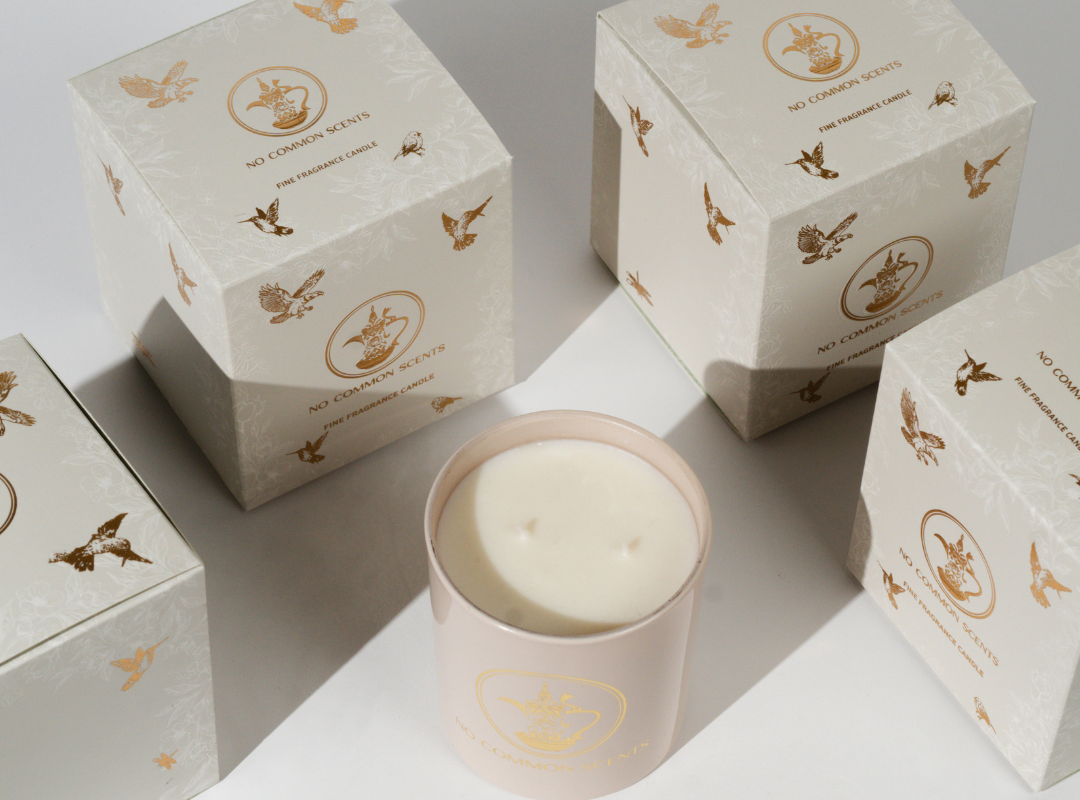
So look, like we said this is our take on it... Not to brag but we're kind of experts in this. We'd love to tell you more about us...
